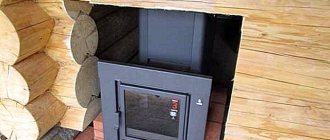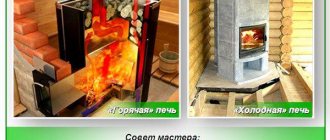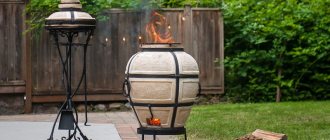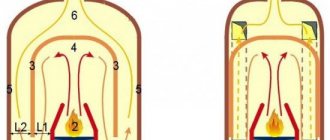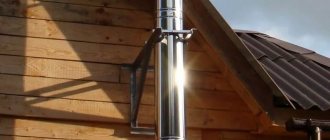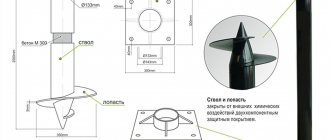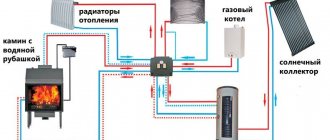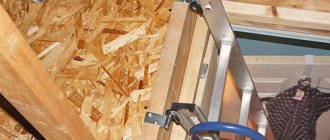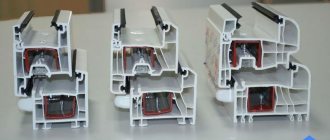The designs of heating devices operating on solid fuels are constantly changing and improving. New parts are installed, components and mechanisms are added, which makes it possible to achieve greater productivity and efficiency of thermal devices. The grate for the furnace is the part that cannot be dispensed with in any design, regardless of its type and size. The product can be purchased at a retail chain or, if you have the tools and skills, you can make it yourself.
A little history
Previously, firewood was burned on a blind hearth - combustion air was supplied through a slightly open fire door. This method has a fire hazard - coals may fall out of the firebox. It is also difficult to accurately select the optimal combustion mode - the regulator is very rough. The ash that covered the coals over time also did not contribute to the normal combustion of fuel - it is an excellent heat insulator (in the combustion chamber of a Russian stove, this is exactly how coals were stored in the ash for the next kindling). Therefore, they began to install a grate - a grate on the hearth through which oxygen enters the combustion zone. The ash is also removed through the grate - nothing interferes with the combustion processes.
The absence of a grate or its damage is not critical - the stove operates without it. True, the efficiency is somewhat lower. And the zone of intense heating of the masonry moves below the hearth - now the base of the ash chamber is also heated. And here you need to be careful if the stove is installed on a wooden base.
Item for arranging the furnace
Choose the optimal location for the heating stove. As an example, a stove installed in the center of the room will give off heat as efficiently and evenly as possible. However, such placement of the stove is not always convenient.
Stove in the middle of the room
If the stove structure is placed against the wall (this option is the most popular and often used), cold will flow across the floor of the house.
Select in advance the location of the combustion chamber door. Design the stove so that in the future you will not have to carry fuel throughout the room, spreading dirt around the room.
The heating stove is located against the wall
The best option is to install a firebox in a room that is rarely visited.
Recommendations regarding the foundation are standard - an individual concrete foundation is installed. It cannot be connected to the main foundation.
Calculate the design of the foundation in such a way that it is able to withstand the load not only of the furnace itself, but also of the smoke exhaust structure, which is also strongly recommended to be built of brick.
Ways to solve the problem
If the grate is damaged, there are two options: fill the ash chamber with a brick or install a new grate.
The option of filling is acceptable only if the integrity is damaged or there are cracks and it is impossible to eliminate them at the base of the ash pit. At the same time, it would be good to replace the firebox door from a blank door to a door with a grille to regulate the flow of secondary air. But this option will definitely create a lot of unnecessary trouble and reduce the efficiency of the furnace. Therefore, we change the grate.
The grate is usually made of cast iron. Cast iron is very different from brick in terms of CTE - coefficient of thermal expansion. This indicator for iron is much higher than for ceramics. Therefore, the grate is always placed freely with a gap of 5-10 mm around the entire perimeter. Some manuals recommend filling the gaps between the masonry and the grate with sand. But this is very stupid advice. Unnecessary and even harmful. Firstly, the sand from the heat of the coals (and it can reach 1100 degrees Celsius) simply sinteres - vitrifies, tightly welding the grate to the masonry and depriving it of the necessary freedom. Secondly, after the first fire, this gap is filled with ash - a non-flammable and non-caking material. So why make unnecessary movements?
It is important to place the grate correctly - an inverted grate quickly becomes clogged with ash and stops working. Therefore, we remember that the grate slits expand downward, not upward. Sometimes the grate has a thickening in the middle - this is to equalize thermal stress, and not to roll the coals to the edges, as some people think.
The figure shows the correct (bottom) and incorrect (top) position of the grate
Usually the grate is placed in a brick trough or in grooves selected in the brick. If the integrity of these grooves is damaged and it is impossible to restore them, you will have to come up with some kind of supports. Sometimes they try to get out of the situation by driving nails, metal plates, etc. into the seams of the masonry. All this is in vain - the metal is quickly tempered and ceases to hold the grate, and more massive pieces of iron are unacceptable - they will tear the masonry.
Step-by-step instructions for making a grate
Before you make grate bars with your own hands, you need to clarify the initial data. The firebox opening subframe is made from a 50×50 mm corner with an internal perimeter of 265×335 mm. Therefore, the grate frame should be made with dimensions of 260x330 mm along the outer perimeter. Having prepared tools and materials, the following work is carried out:
- Using a corner machine, a corner 1180 mm long is cut.
- The side of the corner 40x40 mm is successively marked with a pencil into segments: 260, 330, 260 and 330 mm.
- Perpendicular lines are drawn in marking areas. From the top point, lay 20 mm in both directions. The sides of the equilateral triangle will be the cut lines.
- Using a corner machine, triangular fragments of the corner are cut out.
- Alternately clamping the steel workpiece in a vice, bend it into a frame with a hammer.
- The sides of the folds are connected by welding. The right angles of the frame are checked with a square.
- The remaining section of the corner is divided by a corner machine into 5 sections, each 322 mm long.
- The corners are welded into the frame with the feathers facing outward with 10 mm gaps between them.
- A grinder is used to remove all burrs and metal deposits after welding.
- A piece of strip is welded to one of the sides of the frame, having previously made a hole ø 6 mm in it with a drill. This is done so that when cleaning the grate it can be easily removed from the subframe.
- The finished grate is lowered into the subframe.
It is necessary to comply with safety regulations during work on assembling the grate. The master must have special clothing and shoes, especially for welding work.
The proposed manufacturing method is not suitable for everyone. You must have skills in handling welding equipment and power tools. As a last resort, a grate of this design can be ordered at any mechanic shop. It won't cost much, and the order will be completed quickly.
You can go another way. Instead of corners, cast iron grates 330 mm long are placed in the frame. To do this, appropriate grooves are made under the beam elements in the vertical corner of the frame. Despite the fact that the grate may initially seem difficult to implement, making it with your own hands is not difficult.
Stacked and solid options
In different furnaces, the fireboxes may differ not only in size, but also in shape. In this regard, grate manufacturers produce a wide range of products, so you can choose grate bars for even non-standard shaped fireboxes.
By structure they are distinguished:
- Solid cast grate bars . In this case, a product is produced that cannot be disassembled into parts. They are produced in several standard sizes, so when selecting a product you need to rely on the total area of the fuel chamber of the furnace.
- Prefabricated gratings are assembled from several parts. From these components you can assemble a grate for a furnace of the desired shape and size.
Buying tips
For high-quality combustion, not only the size of the grate is important, but also the weight of the fuel that it can withstand in one laying. The rods should not deform or wear out.
The grate must have a sufficient number of holes - at least 40% of the area of the part itself. If this figure is lower, then there will not be enough oxygen to maintain the fire, and the ash will remain on the grate and clog the stove.
If the gaps in the grate have a large area, then the remaining fuel will fall from the combustion chamber into the ash pan. Fuel consumption will become uneconomical.
Optimal lattice option
What types of grate designs are there?
If we talk about products made of heat-resistant steel, then there are pipe and chain varieties of grates.
As for cast iron grates, there are several types:
- Tiled . Such rectangular grates are widely used in solid fuel stoves and boilers, fireplaces. We can say that these are universal products. You just need to choose the right grate size.
- Baskets . This type of grate was used in open hearths where food was prepared. Currently, they are practically never found.
- Beam . Externally, such grates resemble beams for construction. They are single or double stacked parts from which you can build a grill of any size.
- Movable gratings . The peculiarity of this design is that the grille links can be moved in a horizontal plane, changing the clearance between them. As a rule, such grates are used for long-burning furnaces.
Design features and types
The grate is a grate with separate elements that perform the function of maintaining fuel in the combustion chamber. Based on the design, it is customary to distinguish the following types:
- Flat tile grate. This grate for the furnace is the most common. It is also used in boilers and fireplaces. Its difference lies in certain dimensions. This nuance must be taken into account when laying the stove manually. An installation platform is required for installation into a heating device. It should be easy to remove and the gap should be at least 50mm. After all, almost all grates are made of cast iron, and when expanded, it can cause harm to the combustion chamber and ash pan.
- Beam lattice. This cast iron grate for the stove is stackable. The number of elements must correspond to the dimensions of the firebox. The beam option is the best for arranging a non-standard handmade stove. However, it is necessary to remember about the standards for its length.
Beam grate for oven
- Basket-shaped. Such grates can be used in open fireboxes. Recently, they are installed quite rarely, because a heating device of this type has lost its relevance.
Basket-shaped grate
- Movable grid. The main function in this case is to limit the size of the gap between the grates through the shift of the moving part in the horizontal plane. This is quite convenient for the automatic operation of long-burning stoves.
Movable grate design
How to install a grate in a furnace yourself
When laying a new structure, installing a grate in a furnace does not present any great difficulties.
According to the sequential masonry scheme, the vent and the base of the firebox are laid out. A cutout is made in the foundation bricks for the grate. Then the process is simple - laying out the base, installing the grille, fixing it with cardboard. It's a different matter when repairs need to be made. Especially when the masonry itself is new and it is not possible to disassemble the entire oven, but you just need to replace the grate. In this case, first of all, you need to carefully study the structure of the furnace. It often happens that the grate bars on one side have a thermal gap, and on the other side the structure is securely fastened with a brick or even two. In this case, you will have to remove the hob and disassemble the stove masonry.
For replacement, it is recommended to select an analogue that matches all sizes of the grille to be replaced. If it is not possible to find a similar one, you can if the nature of the damage allows you to simply saw the structure with a grinder and combine the resulting parts, adding the missing elements along the edges.
Well, if you can’t find an element suitable in size, you’ll have to make a grate for the stove with your own hands.
Why is it needed?
As has already become clear, the grate is a grate that allows the air flow to penetrate directly to the combustion center below, and the ash to be removed through the holes to a specially designated place for it. So why do we need grates in a furnace? Installing a grate in a furnace allows you to solve a number of problems:
- Divides the combustion chamber into two zones - the combustion chamber itself and a niche for ash.
- Used for placing and drying fuel.
- Distributes the air flow from the ash pan.
- Promotes good traction.
- Together with the door it makes it possible to control and regulate the flame.
The grate, which is intended for installation in the stove, cannot be made from any metal. Since it is constantly exposed to high temperatures and oxygen, it can begin to oxidize very quickly. Only cast iron can survive in this environment for a long time
Do-it-yourself grate: materials, design, stages of work
As already mentioned, it is easier and easier to make a grate for a stove with your own hands from steel.
There are several options here. The only difference is the purpose for which the lattice needs to be made. For small stoves, which are mainly used for periodic heating of premises, for example, for a potbelly stove, you can use construction fittings with a diameter of 10-12 mm. But for capital heating or heating-cooking stoves, it is better to pay attention to two options - from structural reinforcement or from corners. The advantage of steel reinforcement lies in the availability of this material and the possibility of using previously used sections. In addition, steel reinforcement is more suitable for grates; it does not burn out so quickly, and it is not greatly deformed under the influence of temperature. On the other hand, to assemble this element it is necessary to use reinforcement with a large diameter - 16,18 or even 20 mm. This makes it possible to extend the life of the grille.
The use of steel angles makes it possible to quickly replace a worn-out element; they are not as expensive as other types of rolled products, and by their design they are able to withstand a greater number of heating and cooling cycles than a profile pipe or rod.
The manufacturing technology is quite simple. To assemble a structure from steel reinforcement, it is recommended to first make simple calculations. First you need to calculate the geometric dimensions of the lattice. Here the length, width and height of the product are taken into account. In this case, the height plays no less a role than the length and width; a discrepancy between the height and the cast iron parameter will not allow the grate to be correctly installed in place. A height that is too small will interfere with proper loading of fuel, and a height that is too high will raise the grate above the surface of the bricks, and thus create a space in which ash and unburned fuel will accumulate.
The next step is to calculate the area of the grating. Next, the number of rods is calculated. First, 40% of the area is calculated, approximately how much is occupied by the spaces between the rods. And then the number of rods is calculated. When calculating, it is recommended to round the resulting values; it is not necessary to strictly adhere to the figure of 40%; nothing bad will happen if the gaps are 35 or 45% of the grating area.
The stage of practical work begins with the preparation of material for work - first, the rods are cut; accuracy and precision are required here. After this, a template for assembly is made, markings are made on a section of the board, and nails are simply hammered in to secure the sections of reinforcement. After checking the correctness of the layout, electric welding connects all the elements into one structure. First, tack is done at several points, and then all seams are finally welded around the entire circumference.
Upon completion, the resulting structure is checked in all planes; this is done on a flat surface using a bench angle - all angles must be correct, the lattice itself must be in the same plane. No bends or deformations.
Grill installation
To make a grate for a boiler, a fixed beam structure is most often chosen. This is a composite model, based on a square or rectangle of four beams.
This square must be made according to the size of the combustion chamber in which the grate will be used. Small beams are welded into its base, and the distance between them must also be taken into account. It should be such that the material does not fall during the combustion process, and the burned residues can easily leak through these holes.
What is needed for production?
It is possible to make a grate with your own hands. What to make a grate for the oven from? It is better to use heat-resistant steel as a material, because it is impossible to work with cast iron at home. To make the grille, you can use any materials that have heat-resistant characteristics. This could be fittings, corners, steel pipes or strips of metal.
To make grate bars you will need:
- the metal from which the grille will be made,
- steel rods for creating partitions;
- ruler, tool for making marks;
- grinder for cutting material;
- welding.
From reinforcement
It is not difficult to make a grate from reinforcement yourself. It is enough to select the desired length of the product and cut the reinforcement with a grinder. It is necessary to determine the number of strips and take into account clearances for ventilation.
When the required amount of material has been prepared, you can begin welding the grate using rods. Do-it-yourself grate bars for the stove made from reinforcement can be seen in the photo below:
Peculiarities
The grate is made by hand as a single piece; most often, cast iron is used for its production. The grille of the structure has holes through which air is drawn to the fuel.
The part is laid in such a way that the grille holes are directed from the door opening to the rear wall. For large combustion chambers you will need several grates.
It is quite possible to make a grate with your own hands. It is an important element in the combustion chamber, thanks to which it is possible to obtain efficient combustion of fuel. The designs of modern furnaces and boilers are constantly changing, and details are being improved. But there is a functional element that you can’t do without. This element is the grate.
The grate serves to support wood, coal and fuel briquettes. Through its holes, ash pours down, thereby freeing up space for a new batch of firewood. Grate bars vary in design and are made from different materials.
Price policy
A quality product cannot have a low price. High-quality cast iron parts that will last for many years are expensive. And vice versa, light and cheap ones, made from a mixture of unknown materials, will quickly become unusable.
Approximate prices for furnace grates:
| Size | Price |
| 800x200 mm | 1200-1600 rub. |
| 915x250 mm | 1100-3000 rub. |
| 260x540 mm | 400-500 rub. |
It is better to buy these products in specialized stores. They provide a wide selection of models with different materials and price categories. Consultants will help you make the right choice based on your preferences, the nature of the fuel, and the frequency of operation of the heating device.
How to make a homemade heat exchanger
A register of several pipes
The shape of a heat exchanger for heating made by yourself can be different. The most common option is a register made of several steel or copper pipes, but plate-type examples are also used.
The temperature in the combustion zone is very high, especially when burning coal. Therefore, increased demands are placed on the metal from which the heat exchanger elements will be made, the rationality of its design and the quality of the welds.
Materials for production
An example of using cast iron radiators as a heat exchanger in a brick oven
The task of water heat exchangers for heating is to ensure optimal heat transfer, and in this process the degree of thermal conductivity of the metal is important. For example, a steel pipe conducts heat 7 times less than a copper pipe. Therefore, with the same pipe diameter, to transfer the same amount of heat, you will need 25 meters of steel pipe instead of 3.5 meters of copper.
Copper heat exchangers are the most economical to operate, but also expensive. Heat exchangers made of steel pipes with a diameter of at least 32 mm are considered more affordable for self-production.
Heat exchanger power calculation
It is quite difficult to calculate in advance the power of the heat exchanger for a heating system. To do this, you need to take into account too many factors: pipe diameter, coil length, thermal conductivity of the metal, fuel combustion temperature, coolant circulation rate, etc. The real ability of the heat exchanger to cope with its functions will become clear only after the heating system starts operating.
When calculating, you can estimate that 1 meter of pipe with a diameter of 50 mm, serving as a heat exchanger, will provide 1 kW of thermal power.
Design Features
A heat exchanger for water heating of a house, welded from smooth-walled pipes, is called a register. It looks like a kind of “grid” and is the most popular form of homemade heat exchanger. In addition to this design, simpler devices are also made in the form of a rectangular or cylindrical tank. The main thing is that the surface area for heat exchange is as large as possible.
When making a heat exchanger with your own hands, several conditions must be observed:
- the width of the internal voids in the heat exchanger must be at least 5 mm, otherwise the water in it may boil;
- the thickness of the pipe walls must be at least 3 mm so that the metal does not burn through;
- a gap of 10–15 mm between the heat exchanger and the walls of the firebox should compensate for the expansion of the metal when heated.
Installation features
The heat exchanger is installed inside the furnace during its laying
The easiest way is to install the heat exchanger simultaneously with the construction of the furnace. If you install it in an old stove, you will have to dismantle part of its brickwork.
Procedure:
- A tubular heat exchanger is installed on the prepared furnace foundation directly into the furnace cavity.
- When further laying rows of bricks, space is left for the inlet and outlet pipes of the device.
- After completing the laying of the stove, connect the heat exchanger to the heating system, fill the system with water and test fire the stove.
The video material offers useful tips for making a heat exchanger yourself:
So far we have only talked about heat exchangers in a water heating system
Let's pay attention to other areas of their application.
Criteria for selecting grates for a furnace
The choice of grate is determined by several factors, which include the following:
- Type of heating device (structure).
- The type of fuel used - the grate model will depend on this point. If you plan to heat the stove with coal, then you should purchase more massive grates that can withstand considerable mechanical load and extremely high temperatures. Lighter weight products are suitable for wood fireplaces and stoves.
- The grate must correspond in size to the seat in the combustion chamber. More precisely, the dimensions of the grate are usually immediately included in the design of the furnace, based on the sizes of these products offered for sale.
- The distances between parallel grate bars for wood-burning stoves must total at least 40% of the grate area. This factor will help to avoid difficulties when cleaning the product from ash. In addition, gaps less than recommended will create obstacles to the free circulation of air flow. And this, in turn, will lead to a decrease in the productivity of the heating device, as well as to a decrease in the level of safety of its operation. Insufficient air exchange creates difficulties both for complete combustion of fuel and for normal traction. And the delay of combustion products is unacceptable, as this is fraught with very serious consequences.
If the gaps of the grate are larger than necessary, then not only ash, but also unburned fuel particles will fall into the ash pan. The consequence is a completely unnecessary waste of fuel, since unburned particles of firewood or coal that have fallen into the ash pan will no longer produce the expected heat transfer. And in this case, everything is not very good with security.
Grill installation
Metal tends to expand at high temperatures, so the grate must be installed with a small gap of no more than 5 millimeters in each direction.
The ledge in the combustion hole needs to be cut off; the grate itself will be located on it in the future. In a brick stove, the location for the grate is generally chosen below the opening of the firebox door by one brick. This must be taken into account to ensure that burning wood and coals do not fall on the floor.
At the installation stage, you should not install the grates tightly, since when heated the material is capable of deformation. This can lead to product failure and cracks in the oven itself.
It is also necessary to take into account that if triangular rods are installed in the grate, then it must be laid with triangles down.
Dimensions of grate for the furnace
The dimensions of cast iron grates for a furnace depend on the type of fuel. Their possible sizes are presented in the table.
| Firewood | Coal |
| 330*252 mm | 350*205 mm |
| 300*252 mm | 300*205 mm |
| 250*252 mm | |
| 250*180 mm | |
| 140*180 mm | |
| 120*140 mm |
If it is necessary to install beam gratings, you need to remember that the length is 250, 330 and 470 mm.
If there is a stove, there will be a chimney
The figure shows a part of the stove for which it is necessary to install a horizontal chimney.
As mentioned earlier, we must comply with all parameters of the dimensions of the internal section. If there is not enough experience in this kind of work, then you can build a pattern of the appropriate size. With its help, you can successfully control the entire process of laying bricks.
As previously mentioned, the cross-sectional size of the inside of our chimney will be 125x125x140 mm.
Setting up a horizontal channel
- To do this, we lay two rows of bricks in such a way that we get a horizontal chimney channel. The figure makes it clear how to do this. The bricks are laid in the usual way for brickwork.
- The only thing that is required is strict adherence to the thickness of the seams. Since in an ordinary brick wall a difference of a few millimeters does not play a big role, in a chimney this difference will lead to a change in the internal cross-section of the chimney.
- Therefore, when laying each brick, carefully check and adjust the thickness of the seam and the horizontalness of the laying. This can be done using a building level.
If necessary, the brick is knocked down with a hammer with a rubber tip or an ordinary hammer with a wooden backing. We remind you that our seam thickness is 3 mm
Preparation for overlapping
The chimney channel is ready. Overlapping needs to be done. For this we will prepare a channel. We lay another row according to the pattern shown in the figure.
Now everything is ready for laying the floor
What else is important to know. When laying bricks, pay close attention to any protruding mortar.
All protruding solution must be carefully removed.
If possible, internal seams should be filled completely with mortar. The disadvantages of the solution form additional steps on which soot will subsequently accumulate.
Floor brick - skill, dexterity, desire, training
How to lay floor bricks correctly? This requires a certain skill and knowledge. Let's get started:
- We apply a brick without mortar and determine the part that is inside the chimney channel at speed.
- Using a sander, we round off the sharp corners as shown in the earlier diagram.
- As for the solution. When laying floor bricks, the mortar is applied to the brick being laid and in no case to the masonry bricks.
- Place the brick and determine which parts of it are in contact with the chimney masonry. As can be seen from the picture, it is adjacent to the masonry with one splice and spoon part completely and half a pastel.
- Apply the solution to these parts and spread as evenly as possible. Please note that in order for the brick not to fall to the sides, there should be a little more mortar at the edges than in the center.
- The solution is applied to the brick upside down. When the mortar is applied, lay the brick and press it tightly with the spoon and butt parts.
Precision matters
Then, using a level, we make the necessary measurement. If necessary, knock down the brick using a rubber hammer. Under no circumstances should you hit the part located above the smoke channel.
You can support the brick from below with one hand and carry out the necessary manipulations. The entire row is laid in this way. As a result, you should end up with something as shown in the picture.
We repeat, when laying the last brick of the floor, check the size of the vertical turn. If necessary, trim the brick so that the vertical channel matches the size of the horizontal channel.
Now everything can be repeated in the opposite direction. This is how the entire chimney is laid.
Tile grate
One of the most common types of grate is the tiled grate. The main feature of this design is the observance of strictly fixed dimensions. This grille is designed for an installation site of a certain size.
A mandatory condition must be met - the presence of a gap between the outer perimeter of the grate and the walls of the firebox of at least 5 mm. If this size is not maintained, the cast iron grate may expand greatly when heated and damage the firebox.
conclusions
So, before installing grates in the oven, you should choose them correctly. Cast iron products are considered the best option - they are equally suitable for both brick and steel stoves.
During the selection process, pay attention to the size of the gaps between the bars and the area of the grill, as well as the type of fuel. Monolithic models are a little easier to install, but stacked models can be selected individually according to the size of the firebox.
Do not forget about the compensation gaps around the perimeter of the grille and do not completely bury it.
Provided that all details are observed, the installed grate will not need to be replaced for a long time.
Specifications
A structure of any size can be assembled from beam grates.
Depending on the type of fuel used and the design of the boiler, the grate bars are made of monolithic parts or hollow pipes. The latest models are air-cooled, which reduces the likelihood of metal melting. The shape and size correspond to the firebox of the appliance and the door configuration through which they must pass during installation.
The following types of grates can be installed in ovens:
- Tiled. They are a rectangular product with parallel crossbars. They are universal, as they have different intervals for all types of fuel.
- Baskets. Products with a volumetric configuration that is effective but difficult to maintain.
- Beam. They are set parts from which grates of any size and configuration can be assembled. They are used in self-manufacturing of boilers for assembling non-standard grates.
The correct choice of grate is as important as the chimney, damper and vent. Every detail is important in making a boiler.
Main functions of grate bars
The grate bars are installed in the firebox; as combustion proceeds, the waste is poured into the ash pan.
Any boiler is a structure where each part performs a specific task, ensuring the uninterrupted operation of the entire device.
The grate bars in the furnace perform the following functions:
- Placement of fuel - coal, firewood, briquettes, and other flammable items. Air enters through the blower, ensuring the presence of oxygen necessary for the thermal reaction.
- Removing ash and ash. As the loaded material burns out, it turns into a powder and spills down through the grates. The fuel settles on the surface of the metal, and the flow of oxygen to it improves. This frees up space for loading the next portion of fuel.
The efficiency of the boiler depends on the design of the grates; the correct choice of metal for its manufacture ensures the longevity of the device.
Recommendations for choosing cast iron grates for the stove
A correctly selected grate increases the efficiency of the furnace and reduces fuel consumption. Which option is best depends on:
- type of oven;
- firebox dimensions;
- fuel used.
Type of oven
Each type of grate is better suited to a certain type of heating device. for conventional stoves and fireplaces. in solid fuel boilers. Although flat ones are also used, especially in small models.
For long-burning devices, choose a movable option for better regulation of air flow. And when using open stoves, it makes sense to choose a basket model.
What to make grates from
To make the grate in the furnace, fire-resistant steel and cast iron are used. Since the grate is constantly exposed to combustion, cast iron is considered the best option for its manufacture.
Even the strongest steel will become damaged over time due to exposure to constant fire. And the combustion temperature of coal is considered to be one of the highest among all types of fuel. It is for this reason that cast iron is chosen for the manufacture of the grate. When exposed to high temperatures, steel material has the ability to oxidize, and in the future it rusts and breaks down.
Blower
The vent is the first air chamber in the furnace, which usually has a door. The blower chamber is laid out according to the dimensions of the grate. It can be wider than the grate and overlapped by overlap of rows of side walls up to the grate. Through the ash chamber, air enters the firebox through the grate; in addition, it serves to collect ash and other fuel waste.
Blower: 1 - blower chamber; 2 - blower door
The blower door can be of any size, but no larger than the blower door. Through this door it is convenient to remove ash from the wide ash chamber, and as for air, there is enough of it with a door even half as small as shown. Practice has shown that the best place for the blower door is on the second row of the stove masonry. The door is installed in the blower window, which is connected to the blower chamber. When the door is open, air rushes through the window into the ash chamber. The more the door is open, the more air will enter the ash pan and the better the fuel will burn. Air, especially coming from below, is needed to maintain fuel combustion. Hence the name - blower.
Sometimes the door is used to regulate the draft in the oven: the less the door is open, the less draft. It is not necessary to install a blower door, but it is advisable, because without it a draft can occur in devices that do not close tightly, such as valves. And then the heat will go out into the chimney, and the stove will release less heat into the room.
If there is no door, the draft is adjusted using a valve. The more the valve is open, the stronger the draft, and with it more air will enter the stove and the draft will be stronger, which means the fuel will burn better. If there is no door in the ash window, but there is a view, then the fuel will constantly burn with the same intensity, but with this intensity a lot of heat will go into the pipe, which the brick could absorb. The viewer cannot regulate either thrust or fuel combustion.
Let's say that the door is a few millimeters smaller than shown in the figure. In any case, the seams should be no more than 3-5 mm. To do this, the laying must be carried out from the door to the corner of the stove. The last seam turns out thicker than expected, and such a seam cannot be made. To maintain the thickness of the seams, you need to break off a quarter from a whole brick in the corner of the wall where the door is located. You will get a three-quarter and a quarter. Next, you need to break off a larger quarter, taking into account the thickness of the seam. It will seem to lengthen the whole brick. Instead of a whole brick, you need to put the first three-quarter and the second quarter - it will take the place of the thick seam. The masonry of the top row above this quarter will be made of a whole brick - it will block this quarter. If a thick seam is obtained near the door, then you need to do the same in this place.
If, because of the door, the firebox turns out to be several millimeters narrower and the flues are wider, then this will not affect the operation of the stove. In some areas of the country, stoves are installed without a blower at all. In these furnaces, the combustion doors have windows-openings for air intake instead of a blower. In such fireboxes, only wood and peat fuel burns, but the firewood is buried in ash and forms a lot of firebrands. When they burn out, the heat goes into the chimney, so the firebrands have to be pulled out of the firebox and placed in a bucket of water. Such ovens are made due to the lack of grates. If they exist, then they are installed above the blower chamber.
Recommendations for collecting firewood
- You can burn with different types of wood, but to prevent soot from clogging the chimneys, 1/4-1/3 of the wood should consist of aspen;
- It is more profitable to buy firewood in logs of a given length and split them yourself, then in the stored (sold) volume of firewood there will be 15% more firewood, and the price will be 20% lower;
- At the same time, you will receive logs of the largest diameters (d>40 cm) from the lower part of the tree, which gives off more heat during combustion;
- It is convenient to work with logs d>40 cm according to the scheme for chopping large-diameter logs (see figure above): 1 – we chop off the first segment with a cleaver (double chip line), 2 – then the second segment and then with a simple ax we finish the work with the deck, getting 12 -17 logs. Young people enjoy learning the basics of firewood preparation;
- We put the resulting wood chips in a separate container and carefully use them during kindling.
- The final touch of use. The flame in the stove has gone out, the red coals are giving off their last warmth, we are getting ready for bed. However, having overcome daytime fatigue, we load the firebox with washed potatoes, and in the morning there are warm baked potatoes on the table.
Of course, any stove requires care and care in operation, but how pleasant it is in the fall to feel the warmth in the house, which is created not by an electric heater, but by a live fire. If you are also a supporter of this method of heating your home and are ready to understand the diagrams presented above, your home may also have a bell-type stove that “keeps” heat for almost the whole day
You can find out additional design details, as well as details of the construction of a bell-type furnace from the author of the diagrams and its owner on his blog page
If you are also a supporter of this method of heating your home and are ready to understand the diagrams presented above, your home may also have a bell-type stove that “keeps” heat for almost the whole day. You can find out additional design details, as well as details of the construction of a bell-type furnace from the author of the diagrams and its owner on his blog page.
Photos by Vitaly Groshev.
